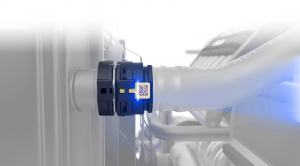ARaymond’s Brenda Lee speaks about growing role of women in manufacturing, STEM fields
As we prepare to celebrate International Women's Day on Saturday, March 8, we spoke with Brenda Lee, a Process Development Technician for global fastener supplier ARaymond at their North American headquarters in Rochester Hills, Michigan. Brenda, who grew up and lives in Flint, Michigan, shared insights into her role at ARaymond, her journey in the manufacturing industry, and her perspective on what the future can hold for women entering the manufacturing and STEM industries.
Q&A with Brenda Lee, Process Development Technician at ARaymond
Q: What do you do at ARaymond? And what’s a typical day like in your job?
Brenda Lee: In my role as a Process Development Technician, I focus on optimizing and improving manufacturing processes. A typical day involves analyzing current production methods, identifying areas for enhancement, and implementing solutions to ensure efficiency and quality. This includes collaborating with die setters who set up the tools, after which our team processes the jobs, making necessary adjustments to achieve the desired outcomes.
Q: Can you tell us about your career path and how you arrived at your current position?
Brenda Lee: I joined ARaymond in 1998 after working at another automotive supplier, where I was involved in bumper assembly. When I first arrived, there were distinct roles for men and women, but I was determined to break those barriers. Despite being told I couldn't handle certain tasks, like lifting materials or die setting, I took the initiative to learn them and prove myself. Over time, I progressed from a production technician to materials handler, then to die setter, and now to Process Development Technician.
Q: What inspired you to pursue a career in manufacturing?
Brenda Lee: Originally, I studied criminal justice in college, aiming to follow in the footsteps of my grandfather, a police officer, and my uncle, a paramedic and firefighter. However, after witnessing some of the harsher realities of that field and heeding my grandfather's concerns, I decided to pivot. A cousin introduced me to opportunities in manufacturing and I found a new path that has been both challenging and rewarding.
Q: How has being a woman in a traditionally male-centered field impacted your career?
Brenda Lee: Navigating a male-dominated industry has certainly shaped my career and personal growth. Facing skepticism and resistance, I became more determined and focused. There were instances where my capabilities were doubted, and I had to continually prove myself. This journey has made me stronger and more resilient, but it's also highlighted the need for equal recognition and opportunities for women in the field.
Now with all the changes in recent years, there’s much more diversity in this field, but it was a struggle along the way. There were people who felt I didn’t belong. But as a self-taught and determined learner, I’ve managed to continue my growth in the industry. To me, it was the first time I was told “No, you can’t do that” that got me motivated. I was determined to make it work.”
Q: What advice would you give to young women considering careers in engineering or manufacturing?
Brenda Lee: It's essential to cultivate determination and resilience. Challenges and naysayers are inevitable, but using those obstacles as motivation can drive you forward.
Also, don't be discouraged by physical demands; there are always tools and methods that can make you work smarter and overcome those obstacles. Most importantly, believe in your capabilities and don't let others define your potential.
The biggest thing for me for women in the industry is a “mind over matter” mentality. You have to set your mind straight, and whatever is thrown at you, whatever people say, let it go, and use that as motivation to get to where you’re going.
Q: What are your career goals going forward?
Brenda Lee: I enjoy my current role as a Process Development Technician, but my next step to advance my career would be a supervisor role, and that’s an eventual goal. I’ve filled in for those roles in the past.
Q: How can the industry support and retain more women in STEM roles?
Brenda Lee: Encouragement and support from management are crucial. Providing women with the necessary tools, training, and opportunities to advance is essential. Early exposure to STEM programs can spark interest, but continuous support and mentorship are key to retention. Creating an environment where women's voices are heard and valued will foster innovation and diversity in the industry. I also encourage men in the workplace to speak up if women are being undervalued, as that can have a major impact.
I would also say to parents who have daughters to teach them at a young age that it’s OK for girls to be in sports and other activities that tend to be more male-dominated. Teach them to be a confident and strong-willed young woman, to be determined, not give up so quickly, and have an inner drive to get ahead.
Q: What efforts is ARaymond making to inspire and support women in STEM professions?
Brenda Lee: ARaymond has been moving in a positive direction with an approach that emphasizes fairness and diversity. There's a conscious effort to encourage women to pursue various roles within the company and to provide the support needed for their growth and development. There’s a recognition that women’s voices need to be heard, and their input taken seriously.
ARaymond: Fluid interfaces and fastening solutions are improving EV thermal management
By Sébastien Frasse-Sombet
Senior Global Product Manager, ARaymond
As the automotive industry continues to evolve and electric vehicles (EVs) become more mainstream, innovations are affecting all vehicle components, including the fasteners and assembly systems used.
One such system is thermal management, a critical element of an EV, with dozens of connection points in each vehicle. The EV and its battery pack must be adequately cooled to ensure safe and efficient operation. It’s essential to secure all fluid lines to avoid leakage inside a battery pack or near the vehicle’s electric components.
Autonomous driving functions are expected to increase this requirement. During autonomous driving, a vehicle’s ADAS computer is cooled by the same liquid that cools the battery. Loss of function can damage the calculator from overheating, potentially leading to an accident. As a result, OEMs are increasing demands for secure connections and product traceability.
In addition to helping automakers ensure EVs are as safe as possible, advances in fastener solutions for thermal management are also making the process of building EVs more ergonomic — allowing suppliers to tailor and customize parts for each requirement. The result is a better and safer electric vehicle for drivers.
Safety first
A key element of thermal management fluid interfaces is a reliable locking mechanism. This comes in many forms. Some quick connectors, when inserted, can provide visual, tactile, and audible confirmation — so an installer feels and hears when the connection is made.
Other options include the use of QR (quick-response) or DMC (datamatrix) codes, allowing for better traceability. QR codes are two-dimensional matrix barcodes invented in the mid-90s. They were initially created to track automotive parts during the assembly process and became widely used in consumer products in the 2000s.
DMC is also two-dimensional but square and can store a significant amount of information. For this reason, it’s becoming the preferred method of encoding data.
In either case, this data is available for review in the event of any concerns or maintenance issues with the vehicles. Such verification is critical for safety and traceability reasons, making identifying possible root causes of potential problems easier. Secured fasteners for thermal management systems and fluid line connections keep EV drivers and passengers safer, an essential goal for all automakers.
Better health
Advanced connection systems for EVs also mean improvements for the technicians building and installing these fastening solutions. This is because many connectors used on EVs have become low-push quick connectors — which means less insertion effort is required during installation.
This is important as it saves plant workers potential repetitive strain or musculoskeletal injuries from accessing the installation point continually throughout their shift.
Typically, these installation points can be challenging to access, increasing the chance of a faulty connection, which can lead to vehicle component damage or poor reliability. There’s also a significant number of connectors required in every EV.
Additionally, larger fluid lines are used, so a proper connection requires more force. When done manually, ergonomics are a concern. By simplifying the architecture of fastener installation, OEMs provide a safer workplace for employees assembling EVs while improving vehicle reliability.
Versatile designs
Automakers have specific requirements and specifications for their electric vehicle lineup. Special features and custom component designs have become essential. One such feature is lightweighting, especially for EVs where vehicle weight and range are significant.
Many custom designs are compressed in size so they fit into tight spaces. The trend toward smaller connectors allows for better space optimization and reduced weight. Part materials can be plastic or metal to serve the connection point best, whether for the battery pack or to seal in individual battery cells.
Suppliers can work with OEMs to offer environmentally friendly materials, eco-friendly designs, and a full lifecycle analysis of the parts. This allows suppliers to play an important role in helping OEMs reach their CSR goals. Custom designs further allow connections to be built for ease of assembly and serviceability, as well as with sustainability in mind. An improved sustainability model minimizes the OEM’s footprint while maximizing coolant flow.
While EVs are presenting new fastening challenges due to a focus on thermal management, the industry is rising to the challenge with products that improve vehicle safety, address ergonomic issues at the assembly level, and create customized solutions that will benefit the automakers and the environment.
Sébastien Frasse-Sombet is a Senior Global Product Manager for global automotive supplier ARaymond.
News Categories
Popular Tags
Search Reviews by Make

AutoTechReviews is your home for In-depth reviews of the latest cars, trucks, and SUVs; information on all the emerging vehicle technology; and breaking news from the world of NASCAR and other motorsports.


